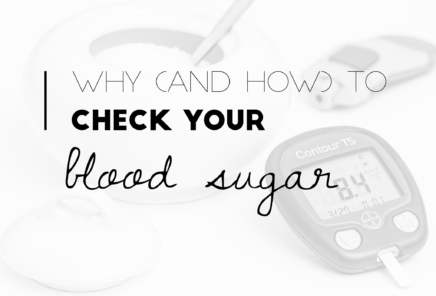Gone are the days when we thought a healthy blood sugar response is a black and white state. You have diabetes or you don’t. So frequently I see women with a blood sugar level that is trending upwards, but because they have not yet hit the cut off of prediabetes they are not told to do anything about it.
Did you know that fluctuations in your blood sugar can cause fatigue, brain fog, mood swings and memory problems? Did you know that it can be a sign of insulin resistance which affects your weight, skin health, hormonal health and metabolic disease risk?
All of these things happen BEFORE prediabetes and we can see them for years before it is picked up in your standard blood work.
That is why I recommend at home glucose testing.
Blood Glucose Monitoring
(The information below comes from my book Finally Lose It: A Professional Woman’s Guide to Stop Dieting, Fix Your Hormones, and Overcome Weight Loss Resistance find out more information about it HERE)
With advances in medical technology, at-home tools have become much more accessible. One of my favourite at-home monitoring tools is a glucose-monitoring device. We can use the results to see how your body reacts to different foods. For example, we’ll be able to understand the different glucose response your body has to a sweet potato compared to an apple. So why do we care about how glucose reacts to foods? Well, it’s individualized medicine at it’s best. We can find out what foods work for you personally instead of fitting you under an umbrella assumption about your glucose response. Let me explain how this is going to work.
The How-To of Testing
- Upon waking, clean a finger
- Prick the clean finger with a clean lancet
- Wipe the first drop of blood away
- Use a second drop of blood to sample
- Write down measurement from the device
- Repeat steps 1-5 two hours following a meal
Fasting blood glucose levels should ideally be: 4.8-5.5 mmol/L or 80-95 mg/dL
2 hr post meal glucose levels should ideally be: <6.0mmol/L or 90-140 mg/dL
Another reason why I love using at-home glucose monitoring tools is because some people may not have access to a naturopathic doctor or medical doctor that can run blood work for them. However, if you do have access to someone who can provide blood work, we can take your results to the next level to compare your glucose response to your insulin response. This is called the 2 hour insulin and glucose challenge test.
Even if you have a ‘normal’ glucose response, we want to know whether or not you needed the normal amount of insulin to get it to that level (remember, insulin takes glucose out of the blood stream and stores it in the liver, muscles and fat cells).
We can identify if insulin sensitivity is a problem and then figure out how we’re going to treat it. I love when technology makes health simpler!
Do you use an at-home glucose-monitoring device? I’d love to hear what you use it for!

